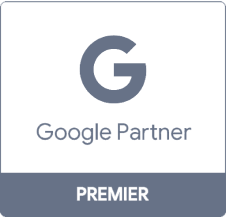- Home
- Email Marketing
- Learn
- The Beginner’s Guide to Effective Email Marketing: Email Content 101
The Beginner's Guide to Effective Email Marketing: Email Content 101
Table of Contents:
The Beginner’s Guide to Effective Email Marketing
- Why Email Marketing?
- Creating Your Email Strategy
- How to Start and Grow Your List of Subscribers
- Email Content 101
- Email Design 101
- Which Email Platform is Right for You?
- How to Write and Send Your First Email
- Email Marketing Best Practices
- Email Automation and Drip Campaigns
- Helpful Resources
“What should I put in my emails?”
This question is a fairly common one – and with good reason. Email marketing programs differ vastly between companies, and it’s hard to tell which approaches are the most effective. Should you opt for highly informative emails? Or should your emails contain mostly sales and special discounts? Are those short, personalized messages making the companies that send them any money?
What you put in your emails is entirely up to you. No one can tell you that you absolutely should or shouldn’t send something, because every company – and their audience – is different. Your subscribers might appreciate silly jokes and humorous product descriptions, or they may turn up their noses at a message that isn’t entirely serious. Only you know your audience and what they are going to enjoy.
Having said that, if you’re brand new to email marketing, you still need some kind of guidelines to follow for the content you include. So consider this chapter a primer on email content that you can use to create your own personalized strategy.
Types of Email Content
Let’s walk through a few different types of content that you may choose to include in your emails, as well as examples of this content in action.
Products or Services
This content is the norm when it comes to ecommerce websites, or even brick and mortar stores with an online presence. Email is a fantastic way to communicate with your most dedicated customers about what’s going on in your store, as well as convince them to visit you again to see what’s new.
For example, IKEA sent out this email about their updated kitchen line:
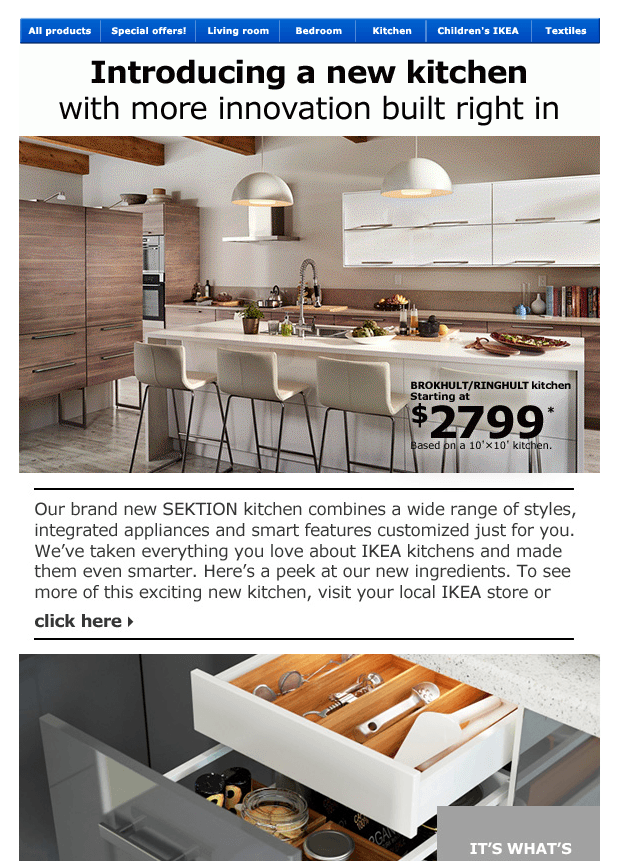
The frequency at which you send emails about items in your store or website is up to you. Some retailers send emails every day, while others opt for every week, and some prefer once a month (or even less). You’ll have to make a decision about this based on how well you know your audience, as well as how often you can produce email content.
Discounts and Deals
Similarly, many ecommerce websites choose to structure their email content around special discounts, deals, or promotions they are offering. These deals are usually time-sensitive, which can create a sense of urgency that leads to enormous ROI.
Having said that, there’s a fine balance between exciting your customers with a special discount and cheapening the idea of a “sale.” If you offer coupon codes every week, there’s no reason to take action. But if you rarely offer any kind of special, you run the risk of customers putting off their purchases until you release a coupon code.
Crate & Barrel regularly runs different specials for various lines of products. You can see one specific deal on chairs detailed in this email:
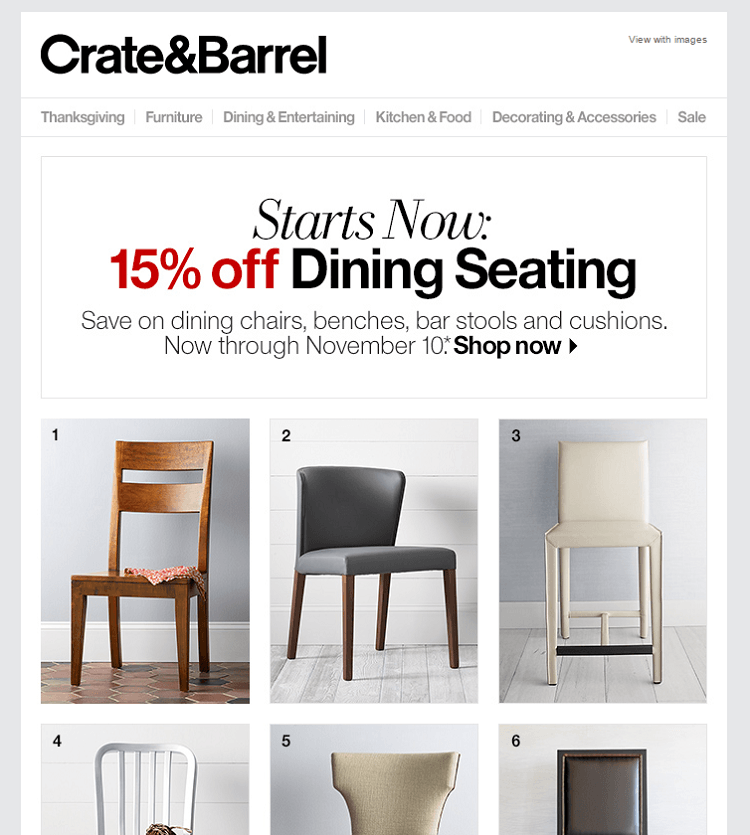
Much like emails about your products or services, how often you send emails of this nature will depend on your audience and your ability to set up a special.
Announcements or New Features
Releasing a new update to your software? Adding new products to your store? Send out an email! Your email list might be one of the most receptive audiences to anything you announce, simply because they’re likely already invested in your brand or business.
Social media network Ello sent out an announcement email when they added a new notification center:
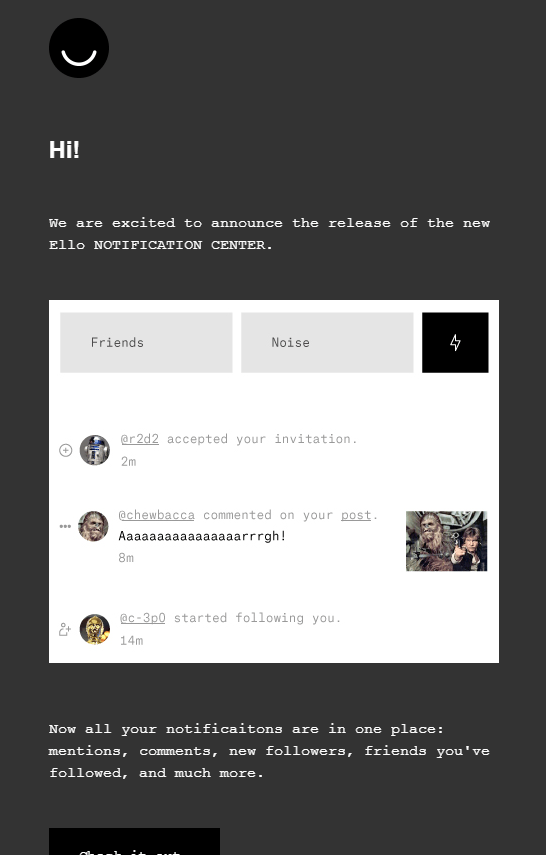
Educational Content
Let’s say you’re part of a B2B organization of some kind. You may not sell products, you don’t often update your services, and it’s uncommon for you to announce anything. What should you put in your emails?
If you run a fairly “static” organization and see email as a lead nurturing opportunity rather than a way to ask people to buy things, one of the best ways to use your list is to educate. This may mean writing up a tutorial on something, creating an email that shares tips or best practices, or even linking to articles and blog posts that do a good job of explaining a complex topic.
This kind of content leans a bit more in the direction of content marketing than it does traditional email marketing, but it can still have enormous benefits – especially if you sprinkle in calls to action or links to your website where appropriate.
Automated Content
Your emails don’t all have to be set up by hand every time you want to get in touch with your subscribers. In fact, some of the best email campaigns out there rely on automation.
Automated content is a great way to stay front of mind with your subscribers and add value to their lives while still saving an immense amount of time. And there are plenty of ways to automate your email messaging so that it doesn’t sound robotic or boring.
You could also try drip email marketing, which “drips” email content to a new subscriber over a preset period of time. This content is typically sent with the intention of making subscribers do something, like sign up for a service or make a purchase. We’ll talk more about this in chapter 9.
Rather than just sending out the content as-is, you can personalize it to give it more depth or make it look, well, not automated. Many drip email campaigns are sent as if they’re written by a real person within an organization, and are crafted to look like a personal email to you. Automated site content can also be prefaced with a personal note, just as long as you can get it into the email template in time.
Links
Some companies that send email campaigns aren’t trying to sell you anything. Occasionally you’ll bump into an email message that consists of nothing but links to other content, usually recommended blog posts or articles on a specific subject.
For example, Moz’s “Moz Top 10” consists of 10 links to content the editors have deemed worth a read, curated over a 2 week period:
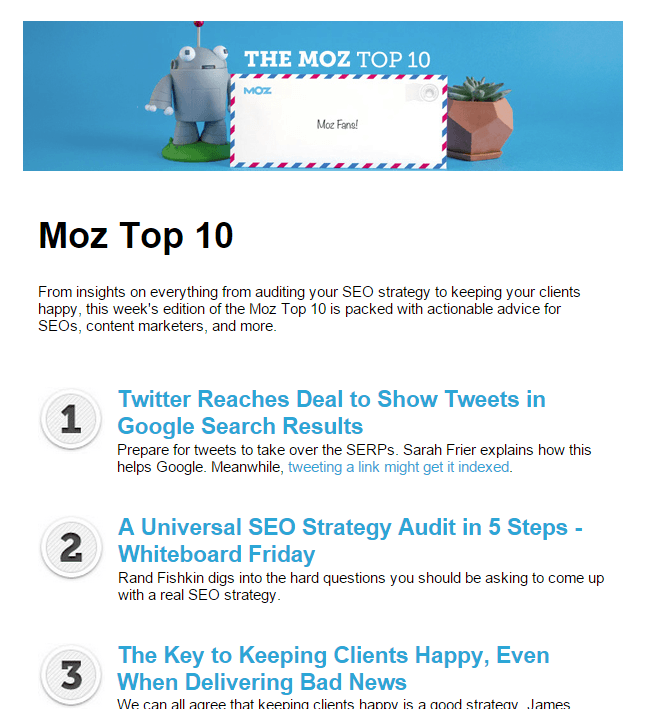
This type of email campaign is highly valuable to the right audience… but not necessarily as valuable to the company sending it. They’re certainly doing a great thing by giving their subscribers access to content they may not have known about otherwise, but the email may not tie back to them in any discernible way.
Does it have to, though? Not necessarily. You can certainly use email to make your subscribers happy and leave it at that. But link emails probably won’t move too many subscribers through your sales funnel, so keep that in mind if you’re considering this type of message.
Other Email Content
Although these are tried and true types of email content, that doesn’t mean you have to use them. Only you know what your customers or leads like and expect from you. So if you want to make up your own type of email, put different pieces of the types we’ve covered into a hybrid message, or even alternate between types as you please.
No matter what kind of content you end up using, you should aim to keep your strategy in mind when developing it. As long as your emails all contribute to your goal in some way – whether that goal is selling products or boosting the opinion of your brand – you can experiment to your heart’s content.
Now that we’ve covered what kinds of content you can include in your email messages, let’s move onto the next topic you’re probably curious about: email design.
Go Back Start Reading: Email Design 101 →
Related Resources
- Email Marketing Design Guide (Plus 7 Best Practices for 2025)
- How to Write an Email Marketing Report for Your Team
- Remarketing Email: Your Go-To Guide to Remarketing with Email
- The Beginner’s Guide to Effective Email Marketing: Email Automation and Drip Campaigns
- The Beginner’s Guide to Effective Email Marketing: Email Design 101
- The Beginner’s Guide to Effective Email Marketing: How to Create an Email Program That Gets Results
- The Beginner’s Guide to Effective Email Marketing: How to Write and Send Your First Email
- The Beginner’s Guide to Effective Email Marketing: Which Email Platform is Right for You?
- The Definitive Email Marketing Guide for SMBs Looking to Drive Revenue
- Beginners Guide to Holiday Email Marketing – Think Post-Holiday!
Marketing Tips for Niche Industries
- Insurance Email Marketing for Agents & Companies
- Real Estate Email Marketing: Your Guide to Email Marketing for Realtors
- Simple and Successful Email Marketing Tips for Construction Companies
- Simple Email Marketing Tips for Home Services Companies
- 29 Healthcare Email Examples to Inspire Your Strategy
- 3 Effective Heavy Equipment Email Marketing Strategies
- 4 Email Marketing Tips for Higher Education
- 4 Email Marketing Tips for Pest Control Companies
- 4 Email Marketing Tips for Pest Control Companies
- 5 Benefits of Email Marketing for Restaurants







